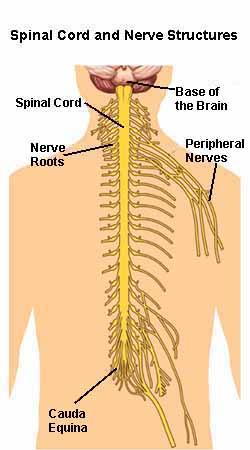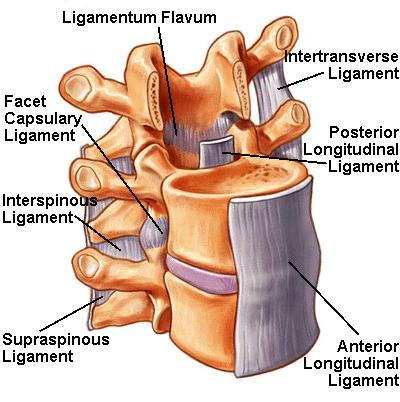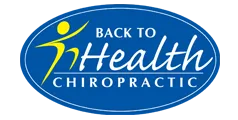Spinal Cord - Ligaments - Muscles - Blood Supply
Spinal Column: An Integral Part of the Human Body: Part 2
The Spinal Cord, Nerve Roots, and the brain make up the Central Nervous System (CNS). The spinal cord is about 18 inches long; three quarter's of an inch thick and is flexible. It is the core of the communication system between the brain and the body.
The spinal bones, cerebrospinal fluid (sir-ee-bro-spinal), and three membranes called meninges (men-in-jez) protect the spinal cord. The spinal cord runs through a hollow canal created by the vertebral arches (ver-tee-brawl).
The three membranes are called the Dura Mater (doo-rah-matter), Arachnoid Membrane (ah-rack-noid), and the Pia Mater (pee-ah matter). The dura mater is a tough outer layer and the arachnoid is a web-like membrane that attaches to the pia mater (thin membrane closest to the spinal cord).
Thirty-one pairs of spinal nerve root fibers pass through the vertebral foramen (foe-ray-men). Similar to tree branches, nerve roots outside the spinal canal branch out to form thousands of nerve pathways throughout the body. The nerves beyond the spinal nerve roots make up the Peripheral Nervous System (PNS). Dermatomes (dur-ma-tomes) are part of the PNS. These are nerve roots that innervate the skin.
Spinal Nerves

The spinal cord ends near the first lumbar vertebra (L1). From that point the nerves resemble the tail of a horse and is therefore called the cauda equina (caw-dah e-kwhy-nah).
Ligaments (lig-ah-ments) connect bone to bone and Tendons (ten-duns) attach muscle to bone. Ligaments and tendons are fibrous connective tissues made up of densely packed collagen fibers. Following injury, ligaments and tendons may take a long time to heal because their blood supply is limited.
In the spine, ligaments help to provide structural stability.There are two primary ligament systems in the spine, the intrasegmental and intersegmental systems. The intrasegmental system holds individual vertebrae together. The intrasegmental system includes the ligamentum flavum (lig-ah-men-tum flay-vum), interspinous (inter-spy-nus) and intertransverse (inter-tranz-verse) ligaments. The intersegmental system holds many vertebrae together. The intersegmental system includes the anterior and posterior longitudinal ligaments, and the supraspinous (sue-pra-spine-us) ligaments.
Ligaments

More than 30 Muscles and tendons help to provide spinal balance, stability, and mobility. Usually working in groups, muscles contract and relax in response to nerve impulses that originate in the brain. Nerve impulses travel from the brain through the spinal cord to a specific location in the body via the peripheral nervous system.
There are different types of vertebral muscle; forward flexors, lateral flexors, rotators, and extensors. Muscle is the only type of body tissue with the ability to contract. It becomes shorter and thicker during contraction. Some muscles work in pairs or as antagonists. This means when a muscle contracts the opposing muscle relaxes. Muscles, tendons, and ligaments support the spine, hold it upright and control movement during rest and activity.
Several layers of fibrous connective tissue called Fascia (fay-sha) cover muscles. Fascia extends beyond the muscle to become the tendon that attaches the muscle to bone.
The spinal column's Blood Supply (vascular system) is an elaborate system of arteries and veins. Circulation nourishes the cells in the vertebrae, spinal cord, nerves, muscles, and other structures.
Cells need plasma to reproduce and repair damage. Red blood carries oxygen to cells (e.g. muscle) to burn glucose for energy. White blood cells help fight infection and are important for immunity. A healthy vascular system helps the spine to fight disease and heal injuries.
Conclusion
It is not necessary to know the names of individual nerves and muscles, nor do you need to know how complex chemical changes in blood affect muscle contraction. What is important is to be able to identify basic spinal elements to help understand a spinal disorder.
This article is an excerpt from the book Save Your Aching Back and Neck: A Patient’s Guide, edited by Dr. Stewart Eidelson.






